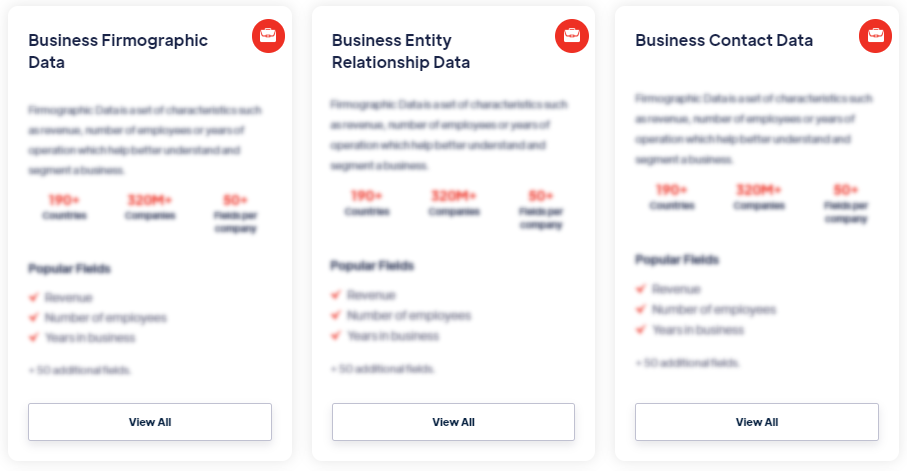Best
Lab Test Data
Products
Lab Test Data refers to the data collected during laboratory testing processes. It includes test results, measurements, observations, and other relevant information obtained from samples analyzed in a controlled laboratory setting. Lab Test Data is commonly used in medical, scientific, and research fields for diagnostic purposes, monitoring health conditions, conducting experiments, and gathering valuable insights. Read more
Our Data Integrations


Request Data Sample for
Lab Test Data

Browse the Data Marketplace

Frequently Asked Questions
1. What is Lab Test Data?
Lab Test Data
refers to the data collected during laboratory testing
processes. It includes test results, measurements, observations,
and other relevant information obtained from samples analyzed in
a controlled laboratory setting. Lab Test Data is commonly used
in medical, scientific, and research fields for diagnostic
purposes, monitoring health conditions, conducting experiments,
and gathering valuable insights.
2. What types of data are included in Lab Test Data?
Lab Test Data can include a wide range of information depending
on the specific tests conducted. It may include patient or
sample identifiers, test parameters, test results (numerical
values, qualitative findings), units of measurement, reference
ranges, timestamps, laboratory metadata (equipment used,
technician details), and any additional notes or comments
associated with the test.
3. How is Lab Test Data collected?
Lab
Test Data is collected through the process of sample collection,
sample processing, and analysis in a laboratory setting. Samples
can include blood, urine, tissue, cells, or other biological
materials. These samples are subjected to various tests, such as
blood chemistry, microbiological cultures, genetic analysis,
pathology examinations, and more. The results and relevant data
are recorded and stored in laboratory information systems or
electronic health record systems.
4. How is Lab Test Data used?
Lab Test
Data is used for various purposes, including diagnosis,
treatment planning, disease monitoring, research, and quality
assurance. In healthcare, Lab Test Data helps healthcare
providers in making informed decisions about patient care,
determining appropriate treatments, and tracking the progress of
diseases or conditions. Researchers and scientists utilize Lab
Test Data for studies, identifying patterns, conducting
statistical analysis, and advancing scientific knowledge in
their respective fields.
5. What are the benefits of analyzing Lab Test Data?
Analyzing Lab Test Data can provide valuable insights into the
health status of individuals or populations, aid in early
disease detection, support personalized medicine, and improve
healthcare outcomes. It helps identify abnormalities, assess
risk factors, guide treatment plans, monitor treatment
effectiveness, and contribute to medical research and public
health initiatives. Analyzing Lab Test Data in large cohorts can
also help identify patterns and trends in diseases, contributing
to epidemiological studies and public health interventions.
6. What are the challenges with Lab Test Data?
Lab Test Data analysis can present challenges such as data
interoperability, data integration from different sources,
standardization of data formats, and ensuring data privacy and
security. Inconsistent data entry, variations in testing
methodologies, and missing or incomplete data can affect the
quality and reliability of the analysis. Additionally, the
complexity of certain laboratory tests, the need for specialized
expertise, and the requirement for advanced analytical tools can
also pose challenges in handling and interpreting Lab Test Data.
7. How is Lab Test Data evolving?
Advancements in technology, including electronic health
records, data interoperability standards, and artificial
intelligence, are shaping the evolution of Lab Test Data.
Integration of Lab Test Data with other clinical data sources
enables comprehensive patient profiles and supports data-driven
decision-making. Moreover, the availability of large-scale
datasets and the application of data analytics and machine
learning algorithms facilitate deeper insights, predictive
models, and more precise interpretations of Lab Test Data. These
advancements hold the potential to improve healthcare delivery,
accelerate research, and enhance patient outcomes.
